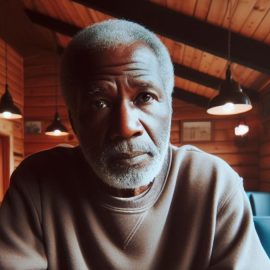

This article is an excerpt from the Shortform book guide to "The Laws Of Human Nature" by Robert Greene. Shortform has the world's best summaries and analyses of books you should be reading.
Like this article? Sign up for a free trial here .
Do you want to know how to become a good leader? Do leaders need to be likable?
There are numerous tactics to learn how to become a good leader. Here, we’ll focus on making people like and trust you, and then establishing good group dynamics.
Keep reading to find out how to become a good leader.
How to Become a Good Leader: Make People Like You
There are several strategies for gaining authority, and they’re effective regardless of where you are in your life—if you’re not yet in a leadership position, the strategies will make you seem destined for one. If you’re already a leader, they’ll help you strengthen your position and learn how to become a good leader.
Strategy #1: Develop goals. Understand that your responsibility as a leader is to guide the group towards goals that are in everyone’s best interests. If you don’t do this, your followers will feel disconnected and the group’s unity will fracture. People will work slower, form factions, become passive-aggressive, or lose respect. This slows down the group’s progress towards the vision.
Strategy #2: Plan for the long-term. Most people can only think about the short term (see Law #13 for more information), so if you can elevate your thoughts and think further ahead, you’ll be able to predict the future and people will trust you. Once you have a vision, create a path to get there. Don’t waver if people doubt you, but be prepared to adapt the path as necessary.
- For example, when 10,000 Greek mercenaries became trapped in Persia, writer Xenophon came up with a plan that would take years to execute but that would eventually get them out.
Strategy #3: Prioritize the group. When people realize you’re working towards the greater good of the group, they’ll be more likely to give you attention and follow you. This is one way of learning how to become a good leader.
Strategy #4: Lead by example. Work harder than anyone else, meet the highest standards, make sacrifices, and be accountable. This will encourage others to do the same. Start leading by example as early as possible—if you try to do it too late, it will look like a ploy.
Strategy #5: Set a precedent for toughness during your first impression. When people break rules or slack off, punish them. You can show your other sides later, but if you show too much softness up front, people will think you’re weak.
Strategy #6: Be authentic. Everyone’s authority style is different because everyone has different strengths and characters, but there are some authority archetypes that everyone fits into. If you can act in accordance with whichever archetype you most identify with, followers will see you as a natural, fated for the job rather than someone who just wants power. Here are the archetypes:
- Saviors hate injustice and want to save people from it.
- Creators like to start new things and progress.
- Visionaries subvert the conventions of their fields.
- Bloodhounds hate lies and want to find the truth.
- Fixers want to fix problems.
- Helpers want to help people find fulfillment and connection.
- Instructors encourage people to do things and help them learn from the results.
Strategy #7: Develop empathy. We need to use empathy to connect with individuals and get them to feel what we’re feeling (reciprocal respect, for example), or alert ourselves to their feelings.
Strategy #8: Don’t be entitled. Entitlement makes us lazy, self-absorbed, and delusional. Instead of being entitled, leaders have to earn their followers’ support. (Leaders are especially susceptible to entitlement because followers regularly hide their true emotions so the leader will like them. This masking makes it harder for leaders to notice ambivalence or even secret resentments that could lead to a coup.)
Strategy #9: Make yourself appear mysterious and complex. You might do this by sending mixed signals, being strategic with your presence and absence, using silence strategically, and being accountable without over apologizing. This will create an aura of mystery and people will be drawn to you. (For more on this, see Law #15: People Want What They Don’t Have). Don’t be too contradictory, though, or people will think you’re unstable.
Strategy #10: Never take anything away from people. Prioritize maintaining resources so you never have to take them from anyone. If the group needs to give something up, such as money or privileges, to achieve its ends, give it up yourself first, and try to make the shortage temporary.
Strategy #11: Don’t break your promises. If you promise people something new and don’t deliver it, people will feel like you’re taking it from them even though they’ve never had it before.
Strategy #12: Remember that people hide their emotions. If you’re in charge of people, they likely won’t feel comfortable showing their true emotions, so assess their actions instead.
Strategy #13: Weed out bad apples. There are some inherently negative people who will only ever take away from, rather than augment, the group. Identify them as soon as possible, and either kick them out of the group, or put them in a position where they can’t corrupt anyone else.
Strategy #14: Adapt with time. The longer you’re in a leadership position, the more danger there is that you’ll start to feel entitled to the position and become more conservative. Maintain your empathy and keep doing all of the above strategies as younger people challenge you and you’ll continue on your path of how to become a good leader.
In addition to these strategies, you may occasionally have to employ a motivational speech, force or punishment, or reward.
No matter how good your vision or empathy, people will always be fickle towards leaders. But if you do a good job of applying these strategies and people trust you, when you make mistakes, you’ll be forgiven more quickly because people don’t want you to step down, or they’ll be lost.
Create a Healthy Group Dynamic
Establishing your authority is only the first step to becoming a likable enough leader to get things done. Your next job is to create a healthy group dynamic that pushes all members towards cooperation, open-mindedness, and achievement. Groups with these healthy dynamics improve society.
There are six strategies for creating a healthy group dynamic. (They’re harder to implement with older groups that are more set in their ways, but it can be done. Be patient and make sure you don’t get overpowered by the existing culture.)
Strategy #1: Clarify the group’s purpose. When a group doesn’t have an overall direction, members get confused about what they should be feeling and working towards, and start to prioritize their individual needs rather than the group’s. Therefore, it’s important to clearly define purpose.
- For example, money and success are byproducts, not purposes, so define the real purpose (anything positive that strives for excellence) that will garner money and success.
It’s also important to keep reminding the group of the purpose—they tend to forget over time, especially when they have success.
Strategy #2: Create a strong leadership team. As the overall leader, you need to save your mental energy and focus for the big picture. If you micromanage, you’ll confuse the purpose. Put together a team of trustworthy, good-spirited leaders to whom you can delegate tasks. When choosing team members, prioritize their characters and competence. Pick people who are good at the things you’re not, and pick a diverse group.
Strategy #3: Never isolate yourself. Don’t ask (or allow) your leadership team to filter information. While you do have a lot to keep track of as a leader and can’t get bogged down in details, you need to have a realistic idea of reality because you’ll make better decisions when you know the whole picture. Make it clear that anyone can talk to anyone in the hierarchy and that talking about failure isn’t off-limits. Don’t appear to prefer a certain source of information or idea. Bring in outside experts. Finally, make sure to explain decisions to your group.
- For example, to keep in the loop, Napoleon Bonaparte had people throughout the chain of command send him short reports. This let him get information from foot soldiers as well as field marshals, which gave him diverse perspectives.
Strategy #4: Be fair. Treat all members the same. If someone isn’t pulling their weight, kick them out of the group. If something needs to be done, you do it too. This will help avoid envy.
Strategy #5: Spark the contagious emotion. Since people in groups are susceptible to feeling the emotions of others, especially the leader’s, feel whatever you want the group to feel and this will spread. Resolution and openness are always good options. Confidence can be productive if it comes from demonstrated accomplishments; otherwise, it can turn into grandiosity.
- For example, basketball coach Phil Jackson wanted his players to be calm so that they could focus on their strategies and recover quickly from mistakes, so before games, he always acted calm himself.
Strategy #6: Test the group. You need to know how much you can ask of your group, so to find this limit, apply pressure, such as giving them an unusually short deadline or difficult project. See who can handle the pressure and who can’t. It’s fine to have a few people—but only a few—who can’t manage pressure, if they have redeeming qualities.
After each challenge, the group will be stronger and should be able to handle new crises and obstacles. This is all part of your learning how to become a good leader.

———End of Preview———
Like what you just read? Read the rest of the world's best book summary and analysis of Robert Greene's "The Laws Of Human Nature" at Shortform .
Here's what you'll find in our full The Laws Of Human Nature summary :
- Why it's in your nature to self-sabotage
- How you behave differently when you're in a group
- Why you're wired to want the wrong things in life






